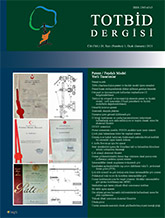
The purpose of current study is to evaluate and compare conventional x-ray, computed tomography (CT) and magnetic resonance imaging (MRI) as radiologic interventions for elderly hip fractures. Despite technological advances in imaging methods, conventional radiographs with correct technique are still the gold standard in hip fractures. Pelvis and femur anterior-posterior (AP), lateral X-rays should be seen for emergency evaluation. While CT excels in detailed imaging of comminuted complex fractures for the joint, appropriate implant selection, and postoperative follow-up for callus formation; MRI provides valuable information in the evaluation of pathological fractures, occult- stress fractures and accompanying soft tissue injuries in clinically highly suspected cases. In conclusion, conventional imaging methods are the most important diagnostic tool in elderly hip fractures; CT is used for complex intraarticular fractures, MRI shows superiority for occult and pathological hip fractures.